- RESEARCHDistance Learning at AIU is enhanced by vast academic resources and innovative technologies build into the Virtual Campus: Hundreds of self-paced courses with video lectures and step by step lessons, thousands of optional assignments, 140,000 e-books, the Social Media & Networking platform allowing collaboration/chat/communications between students, and MYAIU develop students holistically in 11 areas beyond just academics.
- PROGRAMS OFFERED
- Areas of Study
- Courses and Curriculum
- Open Courses
- Register for a Program
- Associate Program
- Associate in Addiction Counseling
- Associate in Agriculture Food And Resources
- Associate in Anti Terrorism Security
- Associate in Behavior Analysis In Special Education
- Associate in Bioethics
- Associate in Climatology
- Associate in Cultural Theological Communication
- Associate in Culinary Arts
- Associate in Ecotechnology
- View all Associates Programs
- Bachelor Program
- Bachelors in Community Development
- Bachelors in Environmental Science
- Bachelor in Education (B.Ed, BS)
- Bachelors in Economics
- Bachelors in Entrepreneurship
- Bachelors in Financial Administration
- Bachelors in Human Resource Management
- Bachelors in Linguistics
- Bachelors in Nutritional Science
- Bachelors in Occupational Health and Safety
- Bachelors in Psychology
- View all Bachelor Programs
- Doctorate Program
- Doctor | of Biology (PhD)
- Doctorate in Business Administration (DBA, PhD)
- Doctor of Economics (PhD)
- Doctor of Electrical Engineering (D.Sc, PhD)
- Doctor of Finance (PhD)
- Doctorate in International Relations
- Doctorate in Information Technology (D.Sc)
- Doctor of Legal Studies (PhD)
- Doctor of Project Management (PhD)
- Doctor of Sociology (PhD, D.Sc)
- Doctorate in Sustainable Natural Resources Management
- View all Doctorate Programs
- Master Program
- Postdoctoral Program
- Postdoctoral in Animal Science
- Postdoctoral in Anti Terrorism Security
- Postdoctoral in Behavior Analysis In Special Education
- Postdoctoral in Bioethics
- Postdoctoral in Blockchain Technology and Digital Currency
- Postdoctoral in Business Management
- Postdoctoral in Cloud Computing
- Postdoctoral in Computer Engineering
- View all Postdoctoral Programs
AIU offers a wide range of majors in areas including the Arts, Business, Science, Technology, Social, and Human studies. More than 120 degrees and programs are available for adult learners at the associate’s, bachelor’s, master’s, doctoral and postdoctoral level. - VIRTUAL CAMPUS
Distance Learning at AIU is enhanced by vast academic resources and innovative technologies build into the Virtual Campus: Hundreds of self-paced courses with video lectures and step by step lessons, thousands of optional assignments, 140,000 e-books, the Social Media & Networking platform allowing collaboration/chat/communications between students, and MYAIU develop students holistically in 11 areas beyond just academics.
- ALUMNI
The world is YOUR campus!”, that is the message of AIU’s month magazine Campus Mundi. Hear the voices and see the faces that make up AIU. Campus Mundi brings the world of AIU to you every months with inspirational stories, news and achievements by AIU members from around the world (students and staff are located in over 200 countries).
Human Factor l
Understanding Personnel Management and Organizational Behavior
This assignment explores the evolution of Personnel Management into Human Resource Management, emphasizing the importance of effectively managing a satisfied workforce. It examines Organizational Behavior, which studies employee behavior and its impact on organizational success, identifying four key elements: people, structure, technology, and environment. The assignment discusses various organizational behavior models, processes for leadership, recruitment, onboarding, training methodologies, and performance appraisal practices. It highlights the critical role of strategic personnel management in adapting to dynamic business environments, fostering innovation, and enhancing employee performance and productivity, ultimately contributing to organizations’ competitive advantage and positive work culture.

The assignment begins by detailing the transformation of Personnel Management into what is now known as Human Resource Management. It highlights that Personnel Management encompasses the processes involved in acquiring, utilizing, and retaining a satisfied workforce, a necessity that arose during industrialization. Early management systems focused on recruiting employees and managing their records and relationships, but the approach has since expanded to include onboarding, orientation, training, performance management, and more.
It further delves into Organizational Behavior, which is the study of how employees act within an organization and the influence of these behaviors on overall success. Understanding these behaviors helps organizations implement changes that can enhance performance, efficiency, and employee satisfaction. Four key elements of Organizational Behavior are identified: people, structure, technology, and environment. The assignment emphasizes that employees, as the most crucial component, must be treated well for the organization to thrive. A clear structure aids in defining roles, while appropriate technology ensures effective task completion. The organizational environment is shaped by both internal and external factors, making it essential for organizations to adapt to these influences.
The Hawthorne study is presented as a significant example of Organizational Behavior, highlighting the notion that employees’ productivity may increase simply due to the attention given to them, a phenomenon known as the Hawthorne Effect.
The assignment also discusses various organizational behavior models, including the feudal model, autocratic model, custodial model, supportive model, and collegial model. Each model presents a different perspective on the relationship between employees and management, ranging from treating employees as inferiors to fostering teamwork and positive workplace environments.
In exploring leadership, the assignment outlines four key factors: the leader, the follower, communication, and the situation. It discusses different leadership styles as conceptualized by Kurt Lewin, identifying autocratic, democratic, and laissez-faire approaches. Effective communication, understanding team dynamics, and the ability to adapt to various situations are emphasized as essential leadership skills.
Recruitment methods are extensively covered, detailing both internal and external strategies, and emphasizing the importance of a structured recruitment process that includes identifying needs, creating job descriptions, advertising positions, and onboarding new hires. The assignment delineates the significance of induction in helping new employees acclimate to the organization’s culture.
On-the-job training is highlighted as a vital method for employee development, showcasing various techniques such as shadowing and practical coaching. Job analysis is described as a systematic approach to define job responsibilities, identify required qualifications, and establish performance criteria. The assignment addresses the outcomes of job analysis, including job descriptions and specifications, which are crucial for recruitment and employee evaluation.
Finally, the assignment discusses performance appraisal as a method of evaluating employee effectiveness. The process is crucial for enhancing engagement, informing promotions and compensations, and fostering communication between managers and employees. Various appraisal techniques, including peer reviews and feedback systems, are identified as key components of effective performance management.
In conclusion, the assignment emphasizes the multifaceted role of personnel management in contemporary organizations, particularly in navigating challenges such as globalization, technological advancements, shifting demographics, and changing employee expectations. Strategic personnel management practices are essential for gaining a competitive edge, attracting top talent, improving performance, and nurturing a positive workplace culture.
Atlantic International University
Get to know the AIU experience
Contact Us Today!
We understand how busy adults do not have time to go back to school. Now, it’s possible to earn your degree in the comfort of your own home and still have time for yourself and your family. The Admissions office is here to help you, for additional information or to see if you qualify for admissions please contact us. If you are ready to apply please submit your Online Application and paste your resume and any additional comments/questions in the area provided.
Pioneer Plaza
900 Fort Street Mall 905
Honolulu, HI 96813
800-993-0066 (Toll Free in US)
808-924-9567 (Internationally)
808-947-2488 (Fax)
AIU Success Stories







Contact Us Today!
Begin Your Journey!
AIU’s Summer of Innovation and Growth gives you the ability to earn up to $5000 in tuition credit by completing free lessons and courses.
Whether you’re looking to acquire new skills, advance your career, or simply explore new interests, AIU is your gateway to a world of opportunities. With free access to 3400 lessons and hundreds of courses the ability to earn credits and earn certificates there’s no better time to start learning.
Join us today as a Guest Student and take the first step towards a brighter, more empowered future.
Explore. Learn. Achieve.
Degrees

Contact Us
Atlantic International University
900 Fort Street Mall 905 Honolulu, HI 96813 [email protected]
Quick Links
Home | Online Courses | Available Courses | Virtual Campus | Career Center | Available Positions | Ask Career Coach | The Job Interview | Resume Writing | Accreditation | Areas of Study | Bachelor Degree Programs | Masters Degree Programs | Doctoral Degree Programs | Course & Curriculum | Human Rights | Online Library | Representations | Student Publication | Sponsors | General Information | Mission & Vision | School of Business and Economics | School of Science and Engineering | School of Social and Human Studies | Media Center | Admission Requirements | Apply Online | Tuition | Faculty & Staff | Distance Learning Overview | Student Testimonials | AIU Blogs | Register for Program | Privacy Policy | FAQ



















